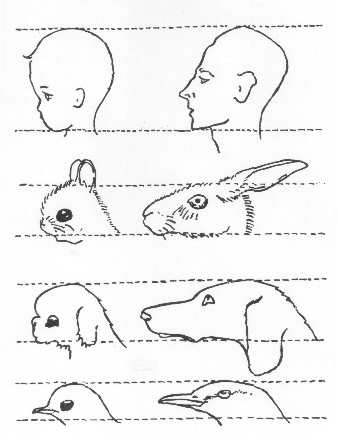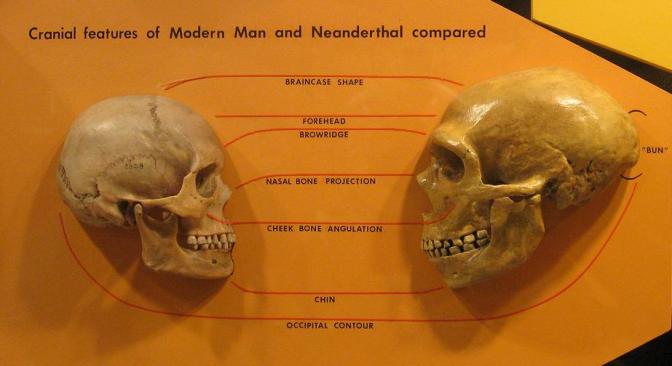Being conscious of our own mortality has given our species an unhealthy fascination with immortality. Over the millennia we have conjured up stories of everlasting beings, some of which even allow us to follow them after we have died. This of course quenches that unnerving feeling of what is after death. I am more than happy being a mortal. And here’s two reasons why.
Firstly, we live for a pretty long time as an animal. Our average life expectancy (in developing countries) is 82 years old. 82 years! That is far longer than a mammal our size. Horses can live up to 28 years. Elephants live much longer, to around 70 years. But this relatively small bipedal ape can live for an average of 82 years. We have a pretty long life. Longer than other mammals.
We only get it once, so let’s live it.
But there is something else. Something that makes me a very happy mortal indeed. This second reason is something where James Matthew Barrie was actually not too far off.
Peter Pan was the boy who never grew up. The original play, by James Matthew Barrie, struck a chord in adults as well as children, because no doubt they didn’t want to grow up either – and still holds a little sparkle to young and old a hundred years later. You and I are more like Peter Pan than we may think. It seems that Homo sapiens have evolved to look younger (known as neoteny). The great evolutionary biologist Stephen Jay Gould suggested that humans as a species have kept the features of youngsters as they have grown into adults. So, as well as taking much longer to mature, we also have much flatter faces, bigger eyes and our soft, hairless features: all of which give us a naturally younger appearance. This is why we have such a natural response to ‘coo’ over babies. And why we find young animals adorable, with those big soppy eyes. And this is why I am a happy mortal. I look much younger than I really should. And you really do too.

The young and adults of a human, rabbit, dog and bird. The human adult (top) retains the flatter face of the young. (Image from Lorenz 1971)
Björn Kurtén’s magnificent novel Dance of the Tiger takes us back 40,000 years ago at a time when Homo sapiens and H. neanderthalensis were both living in Europe at the same time. Here Kurtén introduces the possibility that Neanderthals found H. sapiens very attractive and somewhat godlike with their eternally youthful look no matter what age they were. Some researchers have suggested that Neanderthal faces had much more mature looking faces than sapiens (called gerontomorphic). Furthermore, H. sapiens have a smaller skull than Neanderthals, giving them a younger appearance. I doubt that we were the only hominins that neoteny evolved, but the more robust, stronger features of Neanderthals would have given a different appearance when the two species saw each other.

Modern human skull on the left compared to the more robust skull of a Neanderthal on the right. The gracile, round skull of modern humans, along with the flatter face are traits that adults have retained from childhood. Neanderthals in contrast have larger skulls, and more prominant features. (Image from Cleavland Museum of Natural History. Public Domain.)
It would also seem that you and I are not alone as a species that keeps their youthful looks.
At the very Southern tip of Florida, poking out of the warm crystal clear waters lies an archipelago of small, luscious, green islands: the Florida Keys. On two of these islands, Sugarloaf Key and Bahia Honda Key, there lives an adorable little deer. And what makes this deer adorable to us, is that the adult deer look like youngsters. These are deer that never grow up.
Known as the Key Deer, these are one of the smallest deer around today. Not as small as the Pudu, they still rank pretty high on the adorability scale: adorability in human eyes for those baby features we cannot help but love. And their size is due to events that happened towards the end of the Pleistocene.

A beautiful Key Deer (Odocoileus virginianus clavium) on Big Pine Key, Florida. She looks like a fawn, but she is a fully grown adult, as tall as my hips. (Image by Joseph C Boone, from here)
Fossils of the handsome looking white-tailed deer (Odocoileus virginianus) have been found in rocks around 5 million years ago, during the Pliocene Epoch. This was a very widespread species during the Pleistocene of North America, eventually moving into some parts of northern South America in the Late Pleistocene. It has survived the huge end-Pleistocene extinctions and is a very successful species today, with a number of sub-species. Towards the end of the Pleistocene, the climate was changing drastically. With lower sea levels, Florida was almost double the size it is today. As the planet started warming around 13,000 years ago, the northern ice caps began to melt, resulting in sea levels rising. And this is where our Key Deer come in. As the sea level rose much of Florida’s land was flooded, which created small islands which were originally hill tops. Groups of the white-tailed deer became isolated on these small islands and evolved in their own special way.
Key Deer evolved extreme smaller sizes than their mainland relative. White-tailed deer are just over a meter tall. The cute little Key Deer is around 25% smaller, reaching just 76cm – reaching my hips. Because they are smaller, they appear to retain a more youthful look to them, but for a slightly different reason than ourselves. This shrinkage in size is due to island dwarfism, which we have met before with the Pygmy Stegomastodon and the delightful mouse-goat. Once isolated, being small favoured the ancestors of the Key Deer with limited food sources in a reduced environment. Plus being smaller gives shorter times between conceiving and giving birth, so the smaller deer reproduce faster. One quirky feature of the Key Deer now is that they can swim between islands in Florida Keys. Clearly they didn’t swim back and forth to the mainland much, which helped them retain their unique size.
These unique survivors of the Late Pleistocene today have a new threat. The species that shares the Key Deer’s eternal youth is pushing it to extinction. Humans have infringed on this small creatures environment for many centuries, resulting in massive habitat loss. With an estimated 700-800 wild Key Deer left, they are on the endangered species list. Sadly road kill is the biggest threat, with around 40 killed each year.
This amazing little animal tells us of a time long ago when melting glaciers trapped its ancestors on small islands. If we are not careful, their legacy will soon be lost forever. We may be forever young, but as is clear from the story of the Key Deer, we are all just mortals in the end.
Written by Jan Freedman (@JanFreedman)
Further Reading:
Barton, M, et al. (2002), ‘Wild New World: recreating Ice-Age North America’, BBC Books. [Book]
Bogin, B, (1999), ‘Patterns of Human Growth’, Cambridge University Press. [Book]
Collins, D. et al. (1973), ‘Background to archaeology: Britain in its European setting’, Cambridge: Cambridge University Press. [Book]
GoUld, S J, (1977), ‘Ontogeny and Phylogeny’, Cambridge University Press. [Book]
Kurtén, B, (1980), ‘Dance of the Tiger’, University of California Press. [Book]
Lorenx, K, (1971), ‘Studies in Animal and Human Behaviour’, Volume II. Harvard University Press. [Book]
Reed, J W, (1969), ‘Morphological variation in the cranium and mandible of the white-tailed deer (Odocoileus virginianus): A comparative study of geographic and four biological distances’, Journal of Morphology. 128 (1). pp.95-112. [Abstract only]
Shea, B , (1989), ‘Heterochrony in human evolution: the case for neoteny reconsidered’, American Journal of Physical Anthropology. 80. pp.69-101. [Abstract only]
Wearley, P V, & Ruez, J R. (2006), ‘Pliocene Odocoileus from Hagerman fossil beds National Monument, Idaho, and comments on the Taxonomic status of Odocoileus brachyodontus’, Journal of Vertebrate Palaeontology. 26 (2). pp.462-465. [Abstract only]


Reblogged this on skeeterpeg83's Blog.
Reblogged this on I Am Not A Writer..
Reblogged this on newTeachrtips and commented:
Wow, I had never thought about that! It is very interesting as a society we are looking younger than we should – I always had a “baby face” and many of my friends do too. But to think there is actually an evolutionary reason for it makes me appreciate science and the research that is done.
Only critique, mature White-tails range up to 120cm/1.2m at the shoulder, not 2.5m. The latter is larger even than the Alaska moose (Alces alces gigas.)
Thanks for spotting that Jeff – a bad error on my part. I have updated the post withthe correct information. Thanks again.
JF 13 Nov 2015.
Pingback: The most (and least) read posts of 2017! | TwilightBeasts
Nice post! Just an FYI from a FL native: Key Deer also live on Big Pine Key and No Name Key; Big Pine being their main home range (and the island I grew up on). Today the deer are getting as large as the mainland FL deer. It’s amazing how quickly nutrition can change body size (nutrition = trash from all the people living in the Keys now)!
Pingback: The most (and least) read posts of 2019 | TwilightBeasts
Pingback: The most (and least) read posts of 2021 | TwilightBeasts